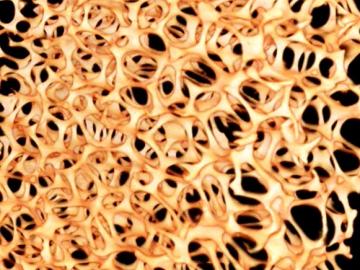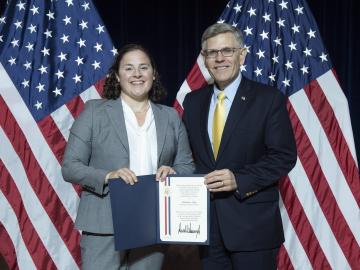Filter News
Area of Research
- (-) Advanced Manufacturing (5)
- (-) Neutron Science (10)
- Building Technologies (1)
- Clean Energy (24)
- Climate and Environmental Systems (1)
- Computational Engineering (1)
- Computer Science (6)
- Fusion Energy (4)
- Materials (24)
- National Security (2)
- Nuclear Science and Technology (8)
- Quantum information Science (2)
- Supercomputing (8)
- Transportation Systems (1)
News Topics
- 3-D Printing/Advanced Manufacturing (5)
- Advanced Reactors (1)
- Bioenergy (1)
- Biomedical (1)
- Composites (1)
- Computer Science (1)
- Cybersecurity (1)
- Energy Storage (1)
- Environment (1)
- Fusion (1)
- Materials Science (4)
- Microscopy (1)
- Neutron Science (8)
- Nuclear Energy (1)
- Physics (1)
- Quantum Science (1)
- Sustainable Energy (1)
Media Contacts

Researchers at Oak Ridge National Laboratory demonstrated that an additively manufactured polymer layer, when applied to carbon fiber reinforced plastic, or CFRP, can serve as an effective protector against aircraft lightning strikes.

Researchers at the Department of Energy’s Oak Ridge National Laboratory have received five 2019 R&D 100 Awards, increasing the lab’s total to 221 since the award’s inception in 1963.

Researchers at Oak Ridge National Laboratory demonstrated that metal foam enhances the evaporation process in thermal conversion systems and enables the development of compact HVAC&R units.

Researchers used neutron scattering at Oak Ridge National Laboratory’s Spallation Neutron Source and High Flux Isotope Reactor to better understand how certain cells in human tissue bond together.

Researchers used neutron scattering at Oak Ridge National Laboratory’s Spallation Neutron Source to probe the structure of a colorful new material that may pave the way for improved sensors and vivid displays.

A team including Oak Ridge National Laboratory and University of Tennessee researchers demonstrated a novel 3D printing approach called Z-pinning that can increase the material’s strength and toughness by more than three and a half times compared to conventional additive manufacturing processes.

Using additive manufacturing, scientists experimenting with tungsten at Oak Ridge National Laboratory hope to unlock new potential of the high-performance heat-transferring material used to protect components from the plasma inside a fusion reactor. Fusion requires hydrogen isotopes to reach millions of degrees.

Two researchers from the Department of Energy’s Oak Ridge National Laboratory have received a 2019 Presidential Early Career Award for Scientists and Engineers, or PECASE.

Researchers have pioneered a new technique using pressure to manipulate magnetism in thin film materials used to enhance performance in electronic devices.

Scientists have discovered a way to alter heat transport in thermoelectric materials, a finding that may ultimately improve energy efficiency as the materials




